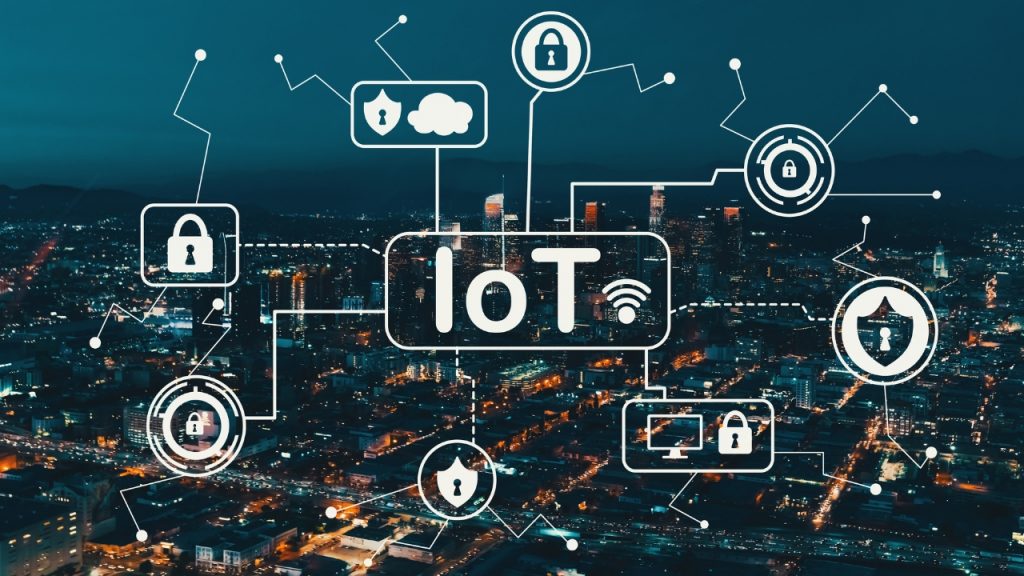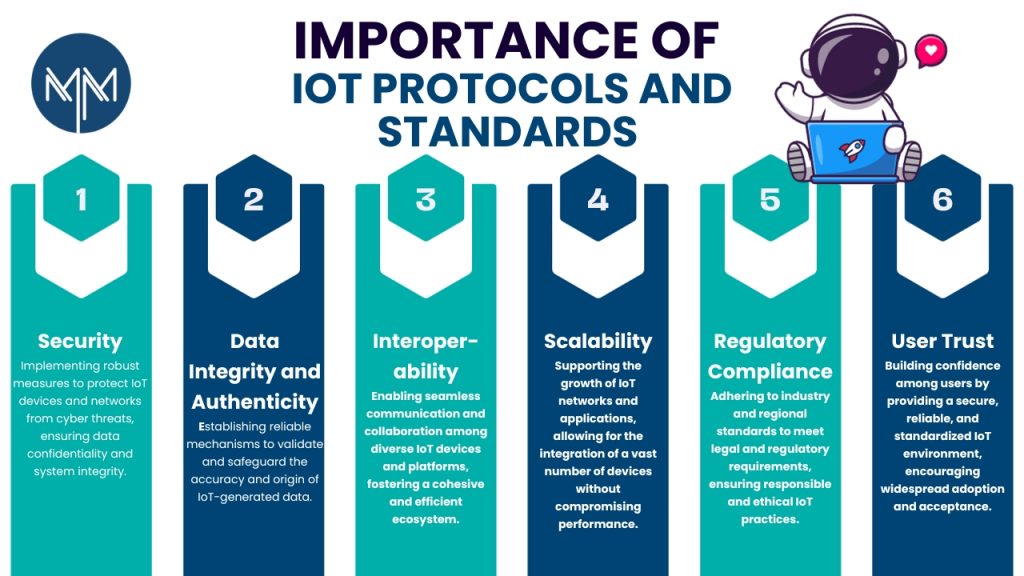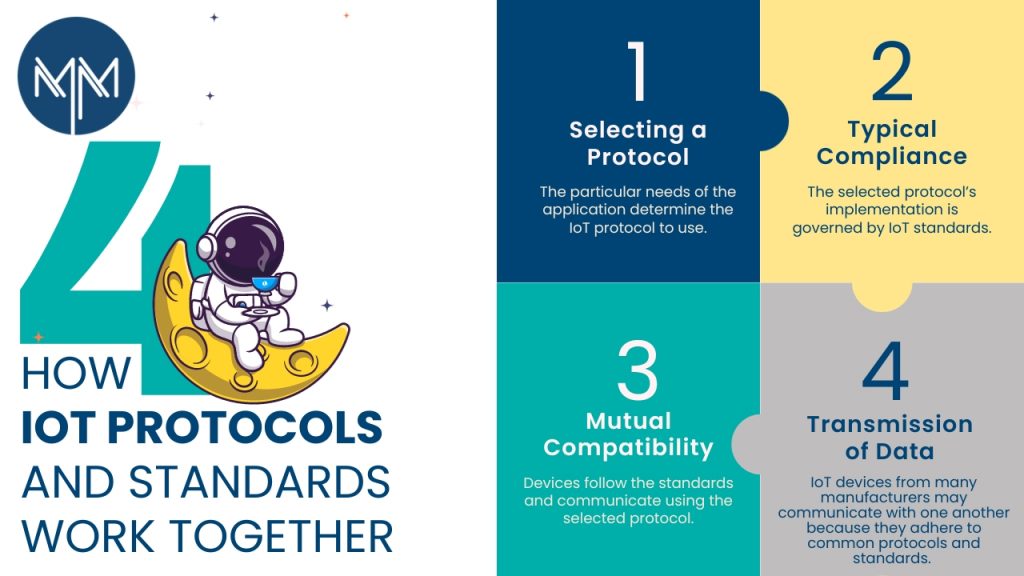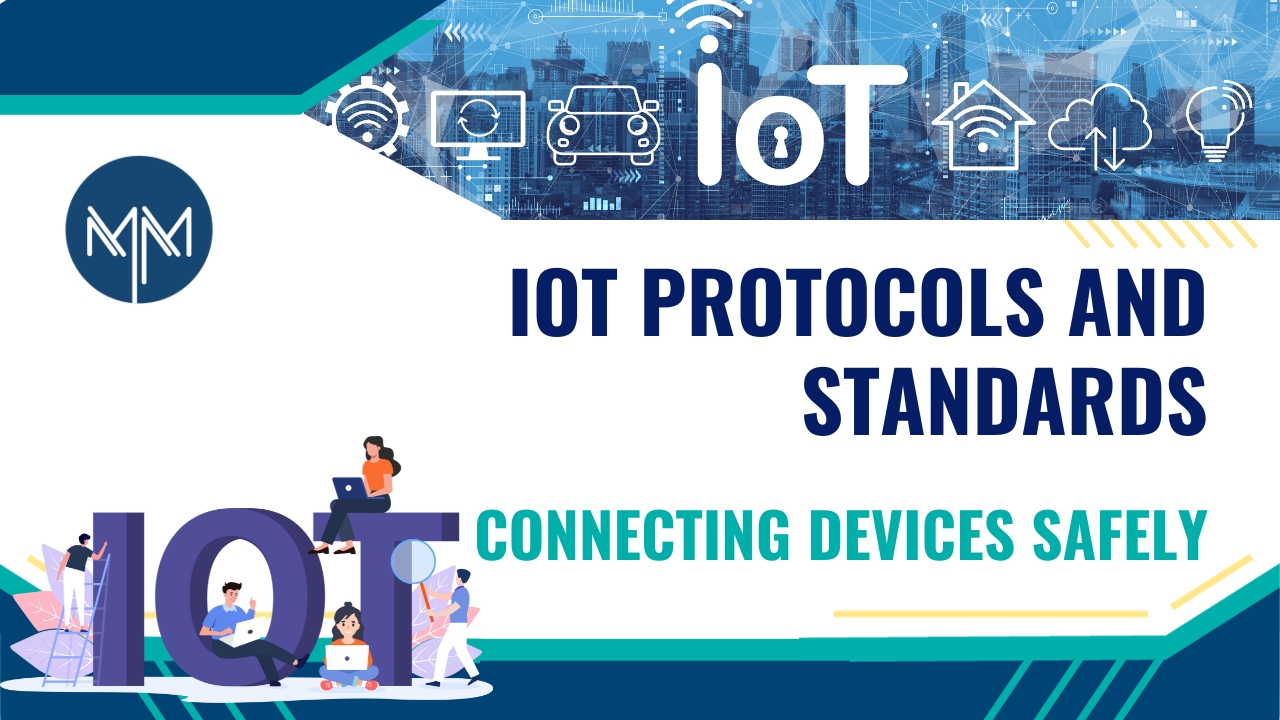The Internet of Things (IoT) has taken center stage in today’s interconnected world. Most importantly, it has revolutionized the way we both live and work. IoT mainly encompasses a vast network of devices, from smart thermostats to fitness trackers to industrial robots/ sensors and autonomous vehicles.
However, while this technology brings incredible convenience and efficiency, it also poses unique challenges, especially when it comes to security. That’s where IoT protocols and standards come into play, ensuring that devices can communicate safely and reliably.
Let’s take a closer look at how crucial the IoT protocols and standards are to create a secure IoT ecosystem.
Understanding IoT Protocols and Standards
IoT Protocols:
Protocols are the guidelines and practices that devices adhere to in order to connect with central systems and with one another in the Internet of Things environment. These protocols specify the format, transmission, and reception of data. Even if they are manufactured by different vendors and employ different technologies, they are necessary for smooth interactions across devices.
IoT Standards:
Conversely, Internet of Things (IoT) standards are set standards and best practises that guarantee security and interoperability throughout different IoT ecosystems and devices. Standards are essential for preserving uniformity in data handling and communication across devices, which lowers vulnerabilities and guarantees a more seamless user experience.

Why are the IoT Protocols and Standards Important?
- Security: One of the major challenges to rise in the IoT space is the breach of security. As IoT devices collect and transmit sensitive information, they become vulnerable and frequent targets for hackers. The establishment of best practices for data security, device authentication, and encryption is greatly aided by IoT standards. By putting these principles into practice, the chance of illegal access and data breaches is decreased.
- Data integrity and authenticity: Reliable and accurate facts are essential for making well-informed judgments. IoT standards contribute to data integrity by guaranteeing the accuracy and consistency of the data gathered by diverse devices. This is particularly important for key applications where inaccurate data might have serious repercussions, such as industrial automation and healthcare.
- Interoperability: Ensuring that various devices can operate together effortlessly is one of the main benefits of using IoT protocols and standards. Consider a smart house equipped with thermostats, lighting controls, security cameras, and other equipment made by different vendors. These gadgets couldn’t communicate with each other if there weren’t established protocols. This gap is filled by IoT protocols and standards, which enable devices to work together efficiently.
- Scalability: The entire IoT ecosystem tends to get more complicated as it expands. IoT standards offer a scalability roadmap, guaranteeing that the system may grow without significant disruptions. This is crucial for sectors where the number of linked devices is constantly rising, like healthcare, logistics, and agriculture.
- Regulatory compliance: Regulations pertaining to data security and privacy apply to many businesses. It is imperative to adhere to these requirements, and Internet of Things standards offer a structure for fulfilling these legal duties.
- User Trust: In the consumer IoT market, user trust is paramount. Manufacturers may boost consumer confidence in their goods and promote adoption and customer satisfaction by adhering to recognised IoT standards.

Common IoT protocols and standards
IoT protocols and standards are widely used to ensure safe and efficient communication among IoT devices. Here are some of the most prominent ones:
- MQTT (Message Queuing Telemetry Transport): A lightweight and effective publish-subscribe messaging protocol, MQTT is intended for networks with low bandwidth, high latency, or instability. It is frequently employed in situations where devices must transfer and receive data while using the fewest resources possible.
- HTTP/HTTPS: Due to their ease of use and broad acceptance, HTTP (Hypertext Transfer Protocol) and its secure variant, HTTPS, are the same protocols that underpin the World Wide Web. They work well in scenarios when instantaneous communication is less important.
- Constrained Application Protocol, or CoAP: For IoT devices with limited resources, CoAP is a simple and effective protocol. It is frequently employed in situations like building automation and industrial applications, where power and bandwidth efficiency are critical.
- Wireless and Bluetooth: Consumer Internet of Things apps extensively use these well-known wireless communication technologies. Wi-Fi offers fast, dependable connectivity for devices inside a local network, while Bluetooth is best for low-power, short-range communications.
- Internet Protocol version 6, or IPv6: In order to guarantee that each device may have a distinct IP address in light of the growing number of IoT devices, IPv6 is essential. In a large-scale Internet of Things network, this is crucial for efficient data management and routing.
- IoT Security Standards: A number of groups and alliances, like the Industrial Internet Consortium (IIC) and the Internet of Things Security Foundation (IoTSF), have created best practices and security standards, especially for IoT security. These standards address things like over-the-air upgrades, secure data transfer, and device authentication.
How IoT Protocols and Standards Work Together
IoT protocols and standards work in tandem to ensure the secure and reliable functioning of IoT devices. Here’s how they interact:
- Selecting a Protocol: The particular needs of the application determine the IoT protocol to use. An agricultural sensor and a hospital IoT device, for example, can employ distinct protocols. The best protocol is chosen by manufacturers, who then incorporate it into their products.
- Typical Compliance: The selected protocol’s implementation is governed by IoT standards. In order to guarantee uniformity in communication and security features, manufacturers conform to these standards. This compliance may entail certain setups, encryption techniques, or data formats.
- Transmission of Data: Devices follow the standards and communicate using the selected protocol. This guarantees safe and effective data transmission.
- Mutual Compatibility: IoT devices from many manufacturers may communicate with one another because they adhere to common protocols and standards. An important component of a strong and scalable Internet of Things ecosystem is interoperability.

Conclusion
IoT protocols and standards have become the backbone of the Internet of Things, enabling devices to communicate safely and efficiently, without the risk of continuous data breaches. On a daily basis, these devices work non-stop to generate large volumes of data and information that are utilized for various significant purposes. The protocols and standards are present to ensure that the devices are working smoothly without any external interference.
As the IoT ecosystem continues to expand, the importance of these protocols and standards cannot be overstated. Manufacturers and developers must prioritize their adoption to create a secure and trustworthy IoT environment, ultimately benefiting both consumers and industries. With the right protocols and standards in place, we can unlock the full potential of IoT while mitigating potential risks.
At Matrix Media Solutions, we prioritize safety over any other factors when it comes to data generation over any IoT device. With compliance with regulations and standards, we are fully efficient in preventing any safety issues. For comprehensive information about our safe and secure online services, we invite you to contact us without delay. Your inquiries are of the utmost importance, and we are ready to provide you with all the necessary details.


 February 03, 2021
February 03, 2021

